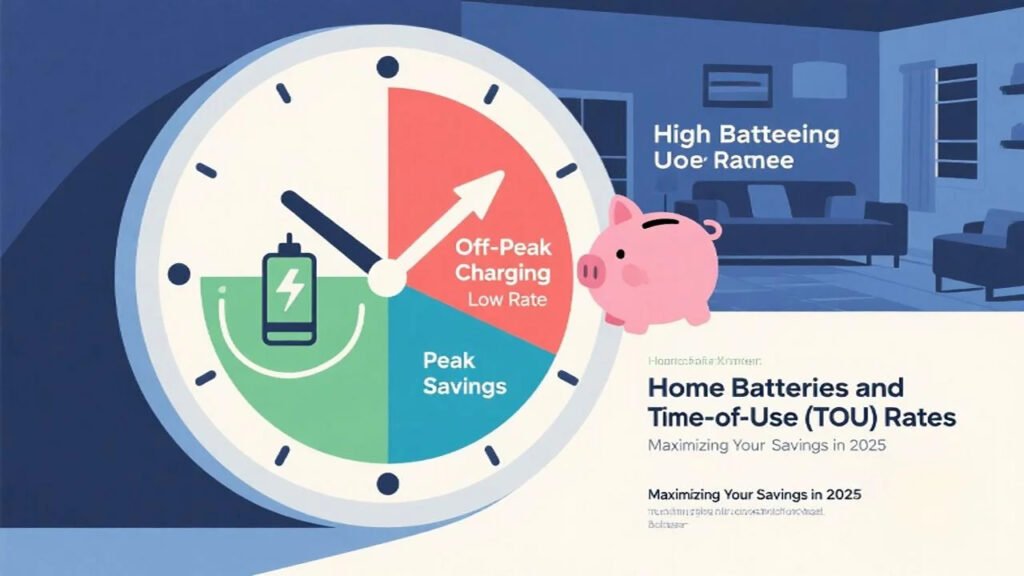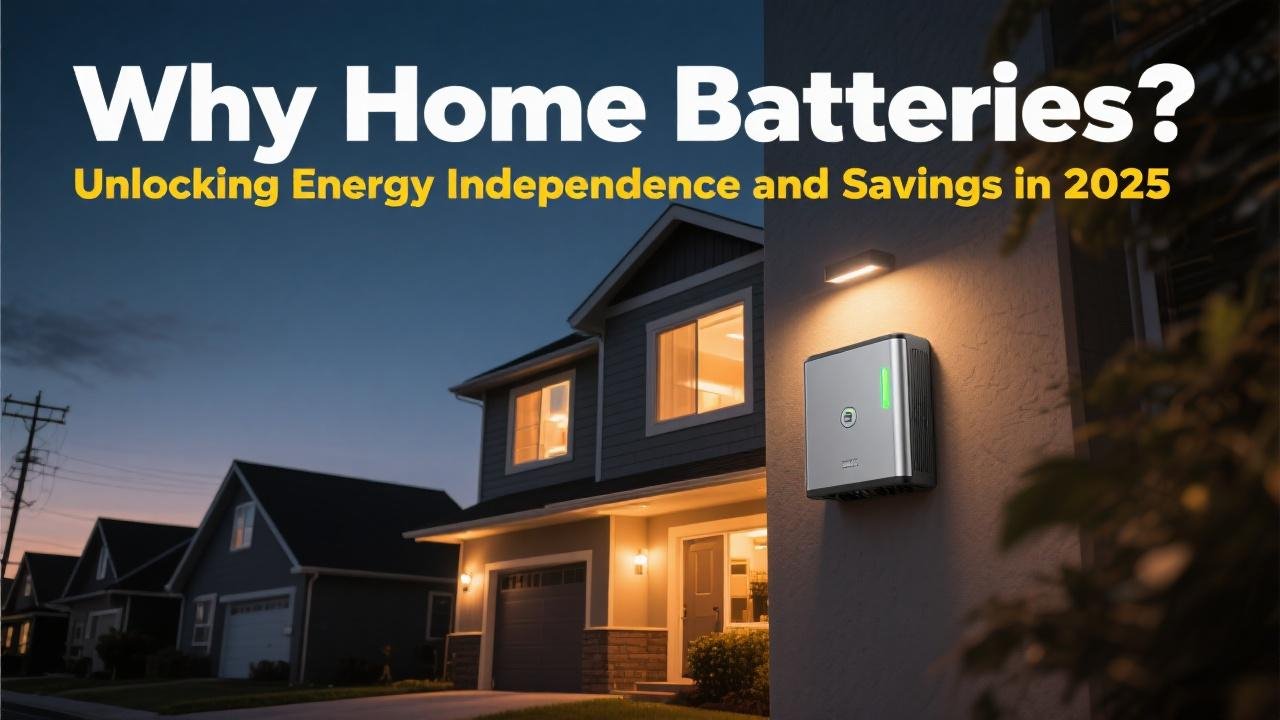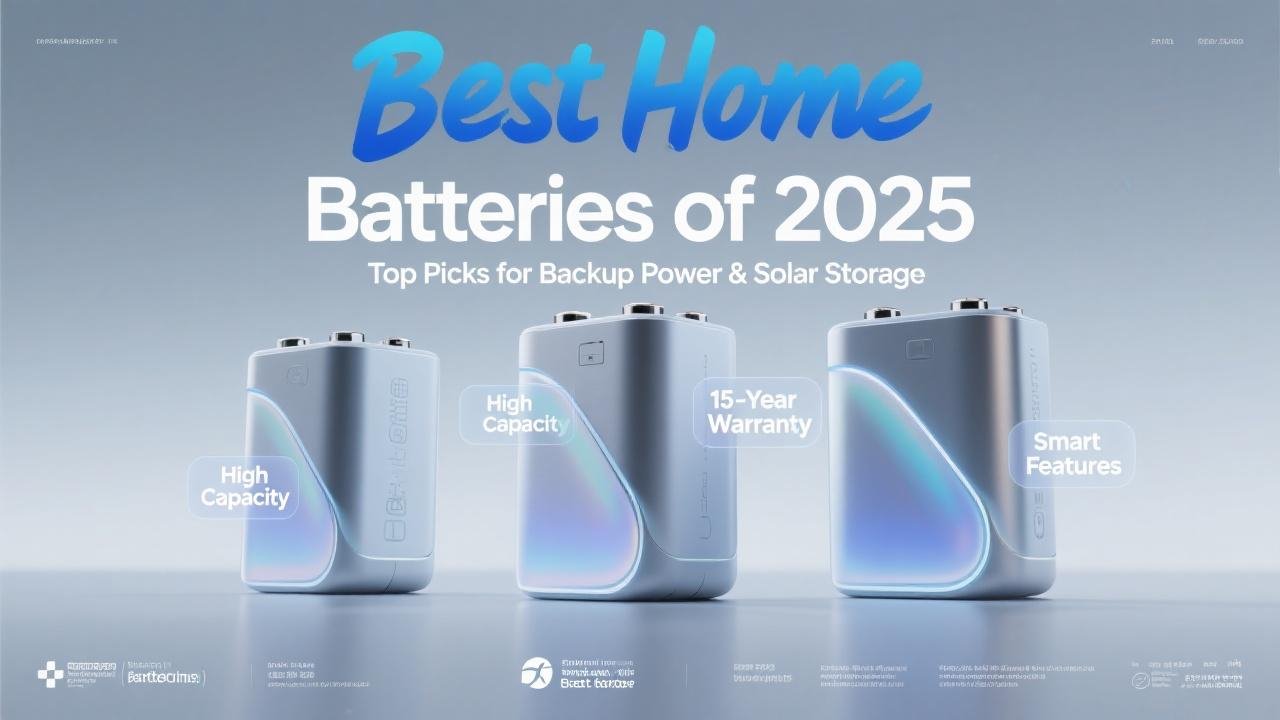Introduction: Beating the Clock with Smart Energy Storage
As utility companies increasingly adopt Time-of-Use (TOU) rate plans, the cost of electricity can fluctuate significantly throughout the day, often becoming much more expensive during peak demand hours. For homeowners with solar panels, this presents both a challenge and an opportunity. While your solar system generates ample power during sunny afternoons (often off-peak), you might still need to draw expensive grid power in the evenings when solar production wanes but household demand is high. This is where a home battery storage system becomes a powerful financial tool in 2025.
By strategically storing your self-generated solar energy and deploying it during high-cost TOU periods, you can significantly reduce your electricity bills and maximize the value of your solar investment. This guide explains how home batteries work with TOU rates and how platforms like EnergySage can help you explore these smart energy solutions.
Understanding Time-of-Use (TOU) Rate Plans
First, let’s clarify what TOU rates entail. Instead of a flat rate per kilowatt-hour (kWh) consumed, TOU plans divide the day into different periods, each with a distinct electricity price :
- Off-Peak Hours: Typically late at night and early in the morning when overall electricity demand is lowest. Electricity rates are cheapest during these times.
- Mid-Peak (or Shoulder) Hours: These are transition periods, often in the morning and early afternoon, with moderate electricity rates.
- On-Peak Hours: These are the times of highest electricity demand, usually late afternoon and early evening (e.g., 4 PM to 9 PM). Electricity rates are most expensive during on-peak hours.
The specific hours and rates vary by utility company and region. The goal of TOU rates is to encourage consumers to shift their energy usage away from peak demand periods, reducing strain on the grid.
How Home Batteries Optimize Savings with TOU Rates: Energy Arbitrage
A home battery system, like a Tesla Powerwall or Enphase IQ Battery, allows you to perform “energy arbitrage” – essentially buying low and selling high, or in this case, storing low-cost energy and using it to avoid high-cost energy.
- Charging with Low-Cost Solar: During the day, your solar panels generate electricity. If your home doesn’t use all of it, the excess can be used to charge your home battery. This stored solar energy is effectively “free” or very low-cost.
- Avoiding Peak-Priced Grid Power: When on-peak TOU rates kick in (e.g., in the evening when you’re cooking dinner, watching TV, and running appliances), instead of drawing expensive electricity from the grid, your smart battery system can discharge, powering your home with the stored solar energy.
- Smart Charging from the Grid (Optional): Some advanced battery systems can even be programmed to charge from the grid during the cheapest off-peak hours if solar production is insufficient or if there’s an anticipated need for more stored energy (e.g., before a predicted storm or a high-demand day). This ensures you always use the lowest-cost energy available.
This strategy, often called “peak shaving” or “load shifting,” directly translates into lower electricity bills because you are minimizing your consumption of the most expensive grid power.

The Financial Benefits in 2025:
- Significant Bill Reduction: The greater the difference between your utility’s off-peak and on-peak rates, the more money you can save with a battery. In some areas, on-peak rates can be two to three times higher than off-peak rates.
- Increased Solar ROI: By enabling you to use more of your own solar energy and avoid high grid prices, a battery enhances the overall return on investment of your solar panel system.
- Protection Against Rate Changes: As utilities continue to refine their rate structures, having a battery gives you more control and flexibility to adapt to changes and protect yourself from escalating peak prices.
- Value Beyond Net Metering: Even in areas with good net metering policies, TOU rates can still make batteries financially attractive. While net metering might credit you for excess solar sent to the grid, a battery ensures you use that solar energy internally to offset the most expensive grid power, which can be more valuable than a standard net metering credit, especially if export rates are lower than retail import rates during peak times (as seen with California’s NEM 3.0 ).
Smart Battery Management Systems (BMS) are Key:
Modern home batteries in 2025 are equipped with sophisticated Battery Management Systems (BMS) and smart software that automate TOU optimization.
- Programmable Modes: You can typically set your battery to prioritize self-consumption of solar, optimize for TOU rates, or focus on backup power.
- Learning Algorithms: Some systems use AI and machine learning to analyze your energy usage patterns and local utility rates, automatically optimizing charging and discharging schedules for maximum savings.
- App-Based Control: Homeowners can usually monitor and adjust settings via a smartphone app, giving them visibility and control over their energy flow.
Is a Battery for TOU Optimization Right for You?
Consider these factors:
- Your Utility’s Rate Structure: Do you have TOU rates? What is the price difference between on-peak and off-peak periods? The larger the spread, the greater the potential savings.
- Your Energy Consumption Patterns: Do you use a significant amount of electricity during on-peak hours?
- Your Solar System Size: Is your solar system large enough to consistently generate excess energy to charge a battery after meeting your daytime needs?
- Battery Cost and Incentives: Factor in the installed cost of the battery system and any available incentives, like the 30% federal tax credit (if charged by solar) or state/local rebates.
Consulting with a qualified solar and storage installer can help you analyze these factors. Platforms like EnergySage allow you to get quotes from multiple vetted installers who can model potential savings based on your specific utility rates and energy usage, and discuss various battery options like the Bluetti EP900, Tesla Powerwall, or Enphase IQ Battery.
Outsmarting Peak Prices with Home Energy Storage
In an era of increasingly complex and often more expensive Time-of-Use electricity rates, a home battery storage system is a powerful tool for homeowners to take control of their energy costs. By intelligently storing low-cost solar energy and deploying it during high-cost peak periods, batteries enable significant savings and enhance the value of your solar panel system in 2025.
With smart management systems automating the process, optimizing for TOU rates has never been easier. If you’re looking to maximize your solar investment and minimize your electricity bills, exploring home battery storage is a wise step. Utilize resources like EnergySage to connect with experts who can help you design a solar-plus-storage system tailored to your local utility rates and energy needs, putting you in charge of when and how you use your power.



